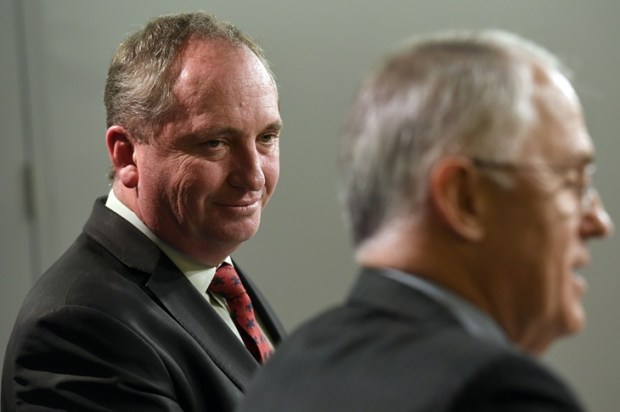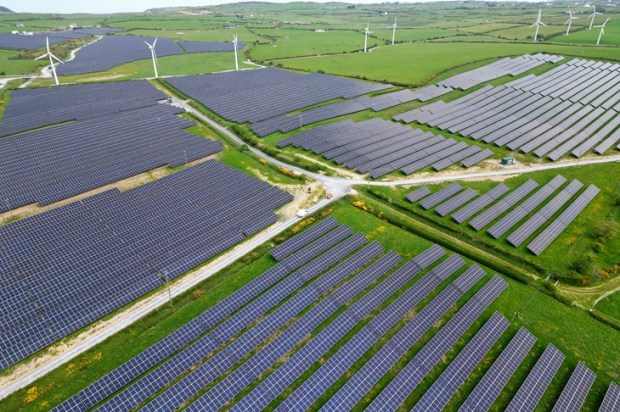Professor Alan Finkel launched his new book Powering Up this month, describing global and Australian pathways to net-zero carbon dioxide (CO2) emissions via renewable energy technologies (solar, wind, hydropower, and battery storage).
In describing our clean energy future Professor Finkel says, ‘Think forests of wind farms … and endless arrays of solar panels disappearing like a mirage into the desert.’ We may or may not like his vision, but there is some arithmetic we have to consider along the way.
Finkel endorses Australia’s goal of a 43 per cent emissions reduction target by 2030, with 82 per cent of electricity generated by renewable energy (wind, solar, and batteries).
A sobering counter-claim by Paul Broad, former chief executive of Snowy Hydro, suggests that it will take 80 years, not eight, to generate 82 per cent of Australian electricity from renewables.
Given that the Snowy 2.0 pumped storage project including its connection to electricity grids has seen a time blowout of six or more years and a cost blowout from $2 billion to a likely $20 billion, maybe Broad knows a fairy-tale when he reads it.
The Hunter Coast near Newcastle in New South Wales, and the Gippsland Coast in Victoria are two of six Australian regions under evaluation for offshore wind-energy farms.
To get an idea of the potential cost we can look at recently completed Hornsea 2 project which sited 165 turbines off the coast of Yorkshire, England. The construction cost was A$5.2 billion per GW of electric power. This is double the estimated cost of a modern coal-fired power station.
Australia generates over half of its electricity from coal-fired plants, according to Australian Energy Regulator figures for 2023. These plants for the most part use obsolete technology and receive minimal maintenance because they are being shut down progressively.
New technology where boilers run at higher temperatures and pressure are vastly more efficient with lower CO2 emissions. The tragedy is that our clever country has not adopted these ultra-supercritical (USC) or high-efficiency low emission (HELE) plants.
Many countries in the West have these plants as well as ten countries in Asia from India and Bangladesh in the west to Vietnam, China, and Japan in the east which have USC technology installed and have additional plants under construction.
What might such technology achieve in Australia? Large coal-fired power plants (think Loy Yang A in Victoria or Eraring in NSW) have output capacities of about 2 to 3GW. A detailed study by engineering group GHD in 2017 found that a USC plant would cost $2.5 billion per GW in today’s dollars or about $5 billion for a 2GW plant. International Energy Agency estimates and Korean experience suggest an average construction time of four to six years for a USC power plant.
Australia has about 20 GW of conventional coal-fired power plants spread over the eastern states which generate the larger part of the nation’s baseload electricity. These obsolete plants could be replaced with state-of-the-art USC plants for about $50 billion. If we include Western Australia’s coal-fired generators, and allow additional costs for Victoria’s generators which use brown coal, the national cost may be in the order of $60 billion, with no additional costs for transmission lines since the existing infrastructure already serves these plants. The benefits? A 30 per cent reduction in CO2 emissions using available technology that provides baseload power, removing the threat of blackouts on cloudy or low-wind days.
Finding $60 billion to finance this conversion is challenging, but as a nation, we face bigger demands. Our Aukus nuclear submarines are estimated to cost up to $368 billion over three decades which is justified on national security grounds. Providing energy security for the nation’s industry and its citizens over the next decade is surely deserving of similar serious consideration.
The federal budget last year allocated $20 billion over four years to Rewiring the Nation, a project which is designed to ‘upgrade, expand and modernise Australia’s electricity grid’. How much more secure we would be if we put a similar amount of money into modernising our generators rather than our transmission lines?
The coal-fired plants envisaged in this discussion will not be the forever solution for our power needs. Over two to three decades, aided by our Aukus nuclear submarine development, small modular nuclear plants will become available. Such plants, like USC coal plants, can be sited at existing power stations.
Finkel is confident that the availability of nuclear plants by 2040 will be too late due to the growth of renewable energy sources however, the growth of nuclear power stations overseas (planned, new, or re-commissioned from mothballed plants) suggests his view is likely too pessimistic.
The US Westinghouse Electric Company, with an established record of manufacturing nuclear power plants, has announced the development of small modular nuclear reactors (SMR) for civilian power generation, targeting operation on the electricity grids by 2033.
The estimated cost of these nuclear plants is equivalent to A$5 billion per GW which is twice the cost of established USC coal technology and may well be subject to cost and time blow-outs. But the crucial point is that over the next decade, USC coal-fired power is the efficient, secure, and achievable option and replacement with nuclear and/or renewable energy should follow as alternative sources become proven, stable, and fit for purpose. We also note that the SMR option is comparable in estimated cost with the actual cost of the Yorkshire offshore wind farm discussed above.
If Australia wishes to pursue the goal of net-zero CO2 emissions by 2050 without nuclear technology the costs may be far greater than the proponents of green energy admit. Former Chief Scientist Professor Robin Batterham led an international consortium which which released their Net Zero Australia report in April. It was written by a team of over 40 collaborators drawn from two Australian universities and two international groups who conducted two years of detailed study and modelling. It covers more than just net-zero power generation detailing the steps needed to create a true net-zero economy covering power, mining, agriculture and exports.
The numbers are sobering. It estimates a cost of between $7,000 billion and $9,000 billion by 2060 covering five different scenarios. The fraction attributable to net-zero electric power generation is not explicitly identified but is likely to be in the range of 25 per cent to 50 per cent of the total cost depending on the pathway chosen.
The analysis incorporates coal-fired power generation as a necessity until 2040 and envisages a continuing need for gas-fired peak power plants through to 2060 with carbon capture and storage technologies designed to remove CO2 to provide a net-zero outcome.
As we contemplate a lower-end estimate of $2,000 billion for Australia to deliver net-zero electricity by 2060, with coal-fired plants operating until 2040, we may well conclude that spending $60 billion over the next decade on efficient, low emissions USC coal-fired power plants is a small price to pay for near-term energy security while we evaluate and implement newer zero-emission technologies such as nuclear and green hydrogen over the next half century.
Michael Asten is a retired professor of geophysics. An abridged version of this article first appeared in the Weekend Australian 17-18/6/2023.

























